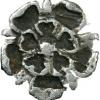|
|
The current range of books. Click the image above to see them on Amazon (printed and Kindle format). More info on coinpublications.com |
|
|

Oversight Withers' Ed II Farthing Type 30l ?
By
Coinery, in British Hammered
 Coinpublications.com
Coinpublications.com